Sometimes the most unassuming objects turn out to be the most fascinating. This fragile printed leaf is one of ten ‘new’ items on display in the British Galleries as part of our biannual ‘rotations’ programme. This blog tells its survival story and how it came to be selected and prepared for display.
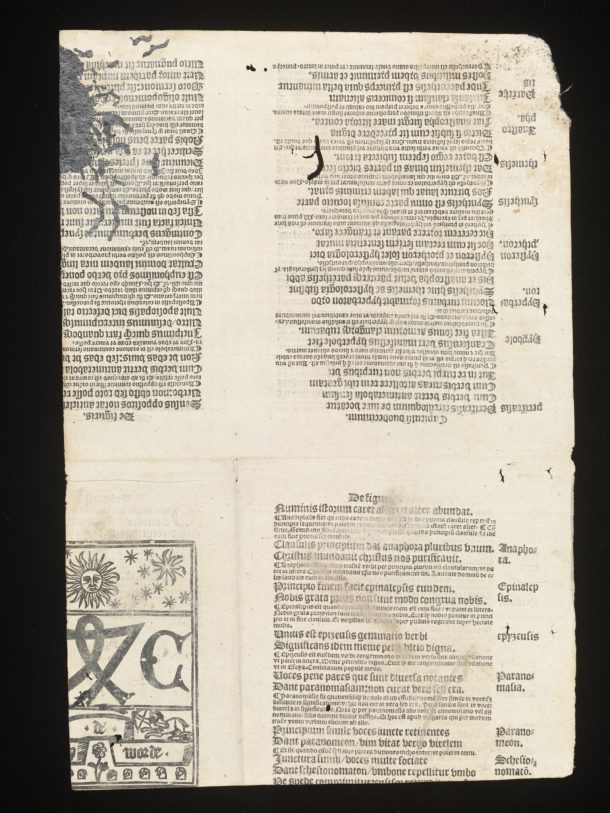
Every June and December we make changes to displays in our permanent galleries. In curator-speak, we call these changes ‘rotations’. They’re our way of preventing fragile paper objects such as prints, drawings and books from becoming discoloured or faded due to prolonged exposure to light. Rotation activities can include turning the pages of a book to ensure that a single opening isn’t exposed for too long or taking objects off display and replacing them with alternatives from the collection.
In December we rotated an entire case of books in the British Galleries. The case focuses on the printed book as a new product in the sixteenth-century and the story begins with the object pictured above: a waste sheet from the workshop of English printer Wynkyn de Worde (about 1456-1535). Printed in 1515, it was originally intended for an edition of Alexander de Villa Dei’s Doctrinale but was discarded, probably because a mistake had been made in the type-setting. Despite its numerous holes and ragged edges, it tells us a great deal about the working processes of printers and binders in the early sixteenth century.
De Worde was a native of Alsace but came to Westminster in 1476 to work as assistant to William Caxton, the first person to establish a printing press in England. After Caxton’s death in 1492, de Worde inherited his master’s house and printing material and carried on the trade.
We can recognise the waste sheet as belonging to de Worde because it bears his ‘device’ or printer’s mark, a common feature of early printed books. The device is partially visible on the bottom left of the sheet and includes de Worde’s name and trademark symbol of the Sun; the same symbol appeared on the sign above his shop on Fleet Street. His device also pays homage to Caxton by very prominently including his initials (the ‘W’ has been cut off but the ‘C’ is still visible).
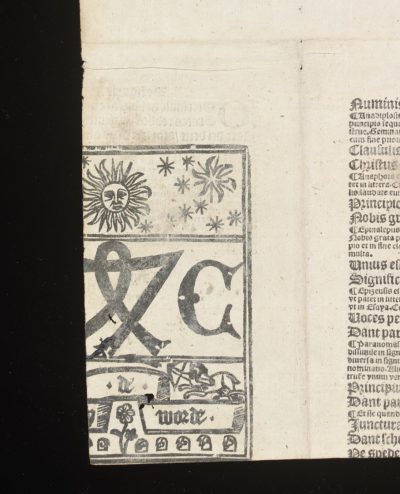
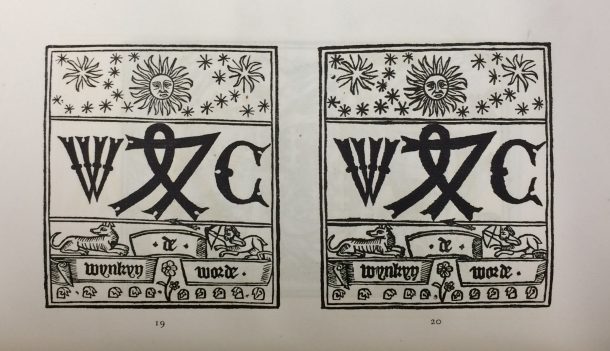
As well as containing information about who printed it, the sheet also shows that the traditional method of producing text for a book was to print several pages on one large piece of paper. In this case, eight pages have been printed on one sheet (four on each side). The pages would then be correctly ordered by folding the sheet and cutting along the horizontal fold (click here for a video of this process in action!). Although the folds in de Worde’s waste sheet are visible, none of them were ever cut: this sheet didn’t make it into the final book, but it did go on to fulfil a second purpose.
In the sixteenth-century it was common practice for printers and binders to re-use discarded sheets. When deliveries were sent from one workshop to another they would often be wrapped in waste sheets for protection. Paper being a valuable commodity; the recipient would often re-use the sheets in bindings, as pastedowns or as protective wrapping for unbound text blocks. For that reason, books from this period often contain fragments from various workshops and sometimes from different countries.
De Worde’s waste sheet didn’t travel far but it did find itself in the hands of an English bookbinder, Godfrey van Gratten (also known as Garret Godfrey) (died 1539). He pasted it into one of two bundles of waste sheets which he used to form rigid covers, or ‘pasteboards’, for a later book.
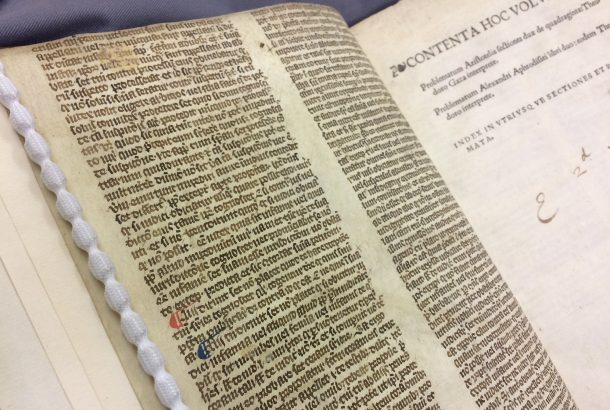
Preserved within this binding for over four hundred years, the sheet was rediscovered in 1959 when conservation work was carried out on the book and its pasteboard covers were removed and dismantled. This revealed a set of twenty sheets (some printed, some manuscript) produced by various printers and scribes for different books. All the sheets had fallen victim to historic insect damage (hence their nibbled edges!) and this may have been the reason why they were removed from the binding in 1959.
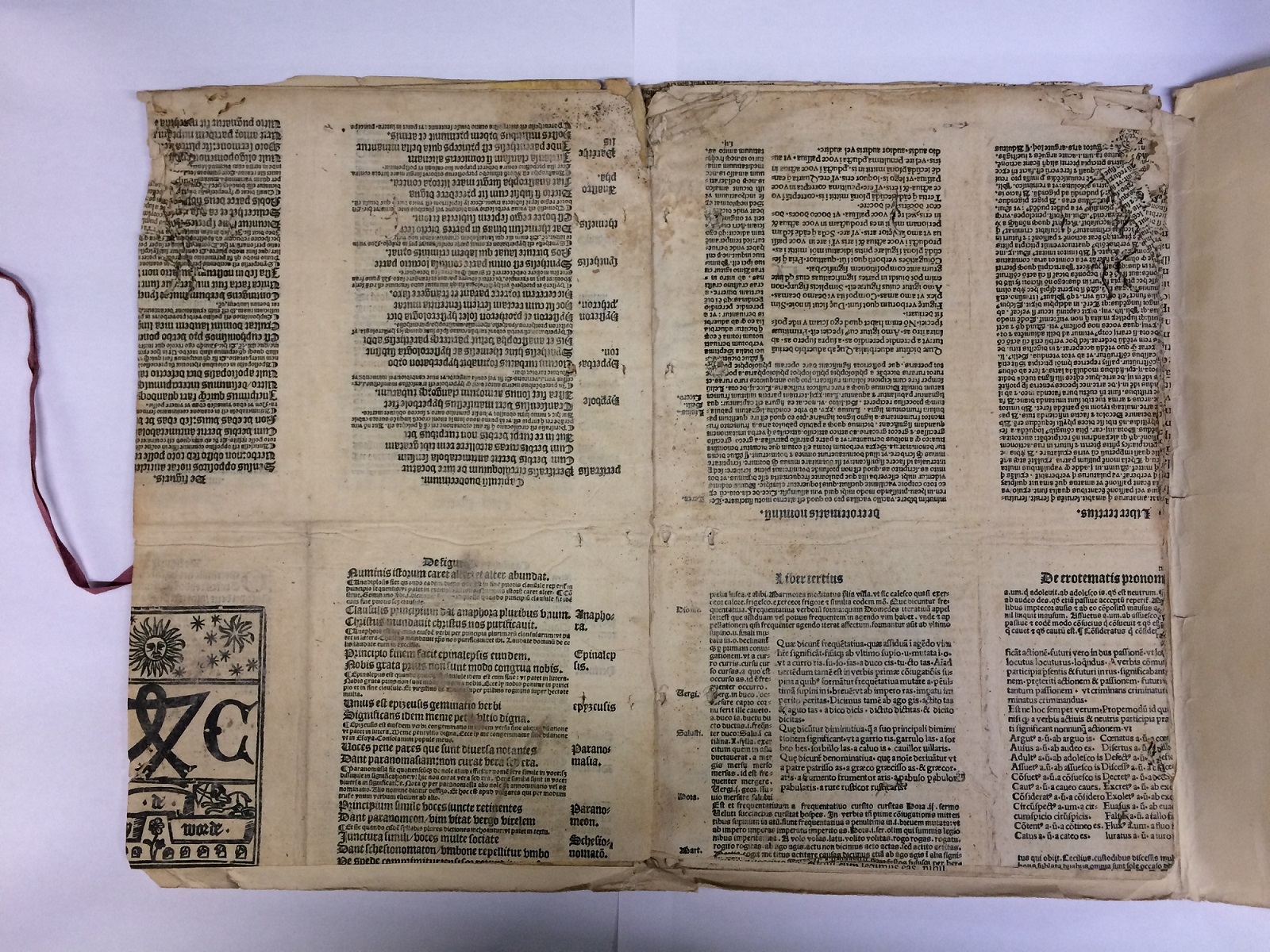
While insects can cause irreversible damage to objects, they can also leave clues about an object’s history as they munch through its layers. When I first showed the bundle of waste sheets to my colleague Anne Bancroft in Book Conservation, she immediately set to work placing them back in the order that Garrett Godfrey had pasted them. She was able to do this purely by matching up the channels of insect damage running through the bundle! Another Conservation colleague, Sarah Bashir, then very carefully repaired the damaged edges of the sheets with thin but sturdy Japan paper supports. De Worde’s sheet was then photographed and mounted before being installed in the gallery.
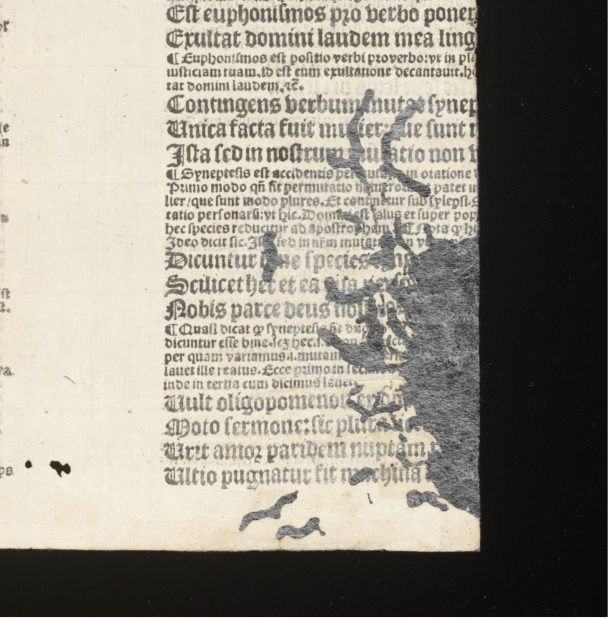
After failing to make the grade for de Worde’s book, and then spending four-hundred years hidden within a binding, it’s about time that this humble waste sheet finally got its moment in the limelight! See it on display in Room 58B of the British Galleries alongside nine other newly selected books from the National Art Library collection.


